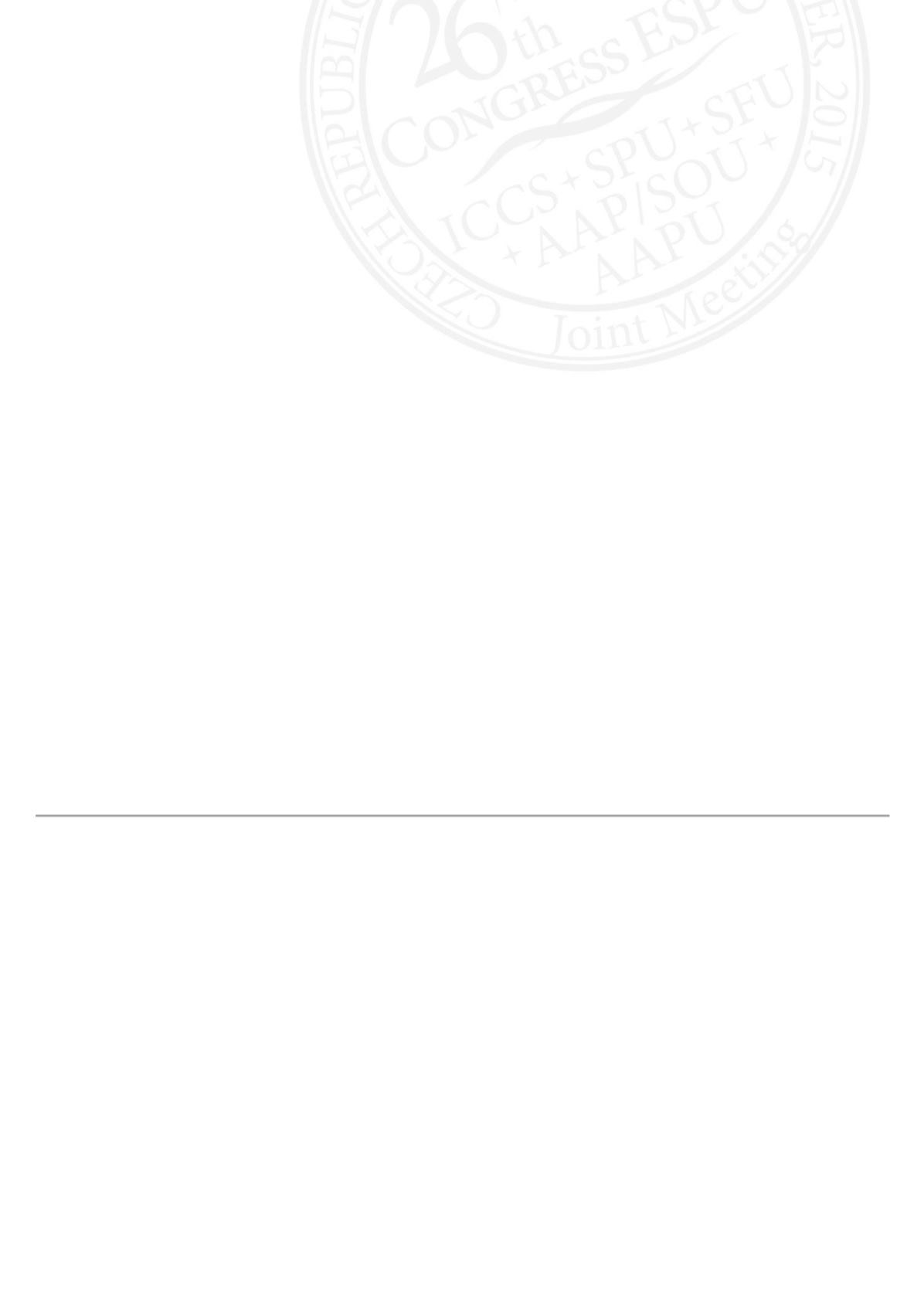

S8-8
(P)
HISTOLOGIC NEUROMUSCULAR DIFFERENCES IN URETEROPELVIC JUNCTION
SPECIMENS FROM PEDIATRIC CASES OF URETEROPELVIC JUNCTION
OBSTRUCTION OWING TO INTRINSIC STENOSIS VERSUS EXTRINSIC
COMPRESSION: A PILOT STUDY
Moira DWYER
1
, Kathryn MCFADDEN
2
, Miguel REYES-MUGICA
2
and Michael OST
1
1) Children's Hospital of Pittsburgh of the University of Pittsburgh Medical Center, Urology, Pittsburgh, USA - 2)
Children's Hospital of Pittsburgh of the University of Pittsburgh Medical Center, Pathology, Pittsburgh, USA
PURPOSE
Muscle thickness at the ureteropelvic junction (UPJ) correlates with the time to radiographic improvement after UPJ
repair. No such correlation has been identified for the density of interstitial cells of Cajal (ICC). Before investigating
this, we sought to determine through a pilot study whether histologic neuromuscular findings at the UPJ differ
significantly between cases of intrinsic stenosis and extrinsic compression.
MATERIAL AND METHODS
Retrospective review identified 197 children who underwent minimally-invasive pyeloplasty at out institution from 2008-
2013. Exclusion criteria were applied and patients were case matched to select ten with intrinsic stenosis and ten with
extrinsic compression. Histologic sections of their UPJ specimens were evaluated for muscularis propria hypertrophy
with hematoylin and eosin staining. Perifascicular fibrosis was assessed with Masson trichrome staining. Numbers of
ICC and submucosal Schwann cells/nerve fibers were scored using C-kit and S100 antibodies, respectively. One subject
was excluded due to exhaustion of the tissue block.
RESULTS
Most patient specimens with both intrinsic stenosis and extrinsic compression had smooth muscle hypertrophy (6/9 and
7/10, respectively). Severe fibrosis was only found in cases of intrinsic stenosis (4/9) while moderate perifascicular
fibrosis was observed in 5/9 with intrinsic stenosis and 2/10 with extrinsic compression. The densities of ICC and
submucosal nerve fibers were positively correlated with muscle hypertrophy and inversely related to perifascicular
fibrosis, but did not reliably distinguish between intrinsic and extrinsic etiologies.
CONCLUSIONS
The neuromuscular distribution in cases of UPJ obstruction did not clearly vary with intrinsic versus extrinsic etiologies of
obstruction in this pilot study. Therefore, evaluation of the relationship between the density of nerve cells and surgical
outcome measures can include specimens of either type. Histopathologic fibrosis should also be investigated as a
potential independent variable.












